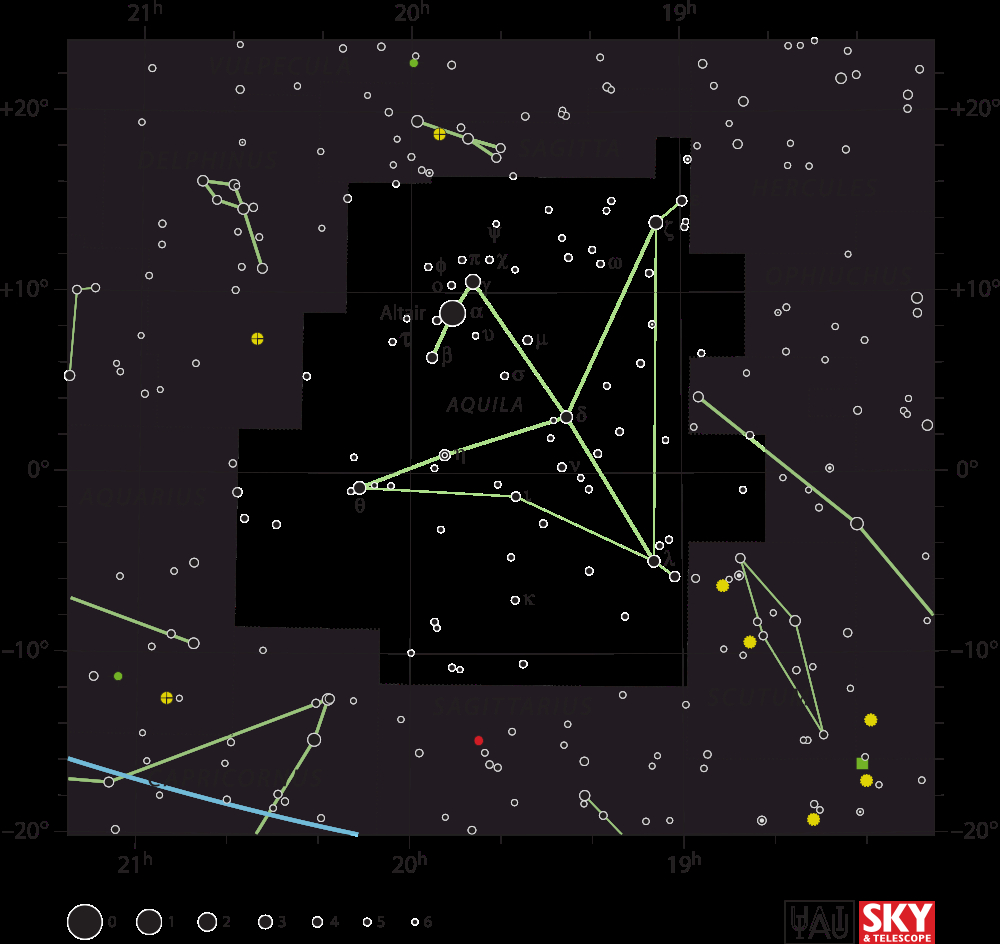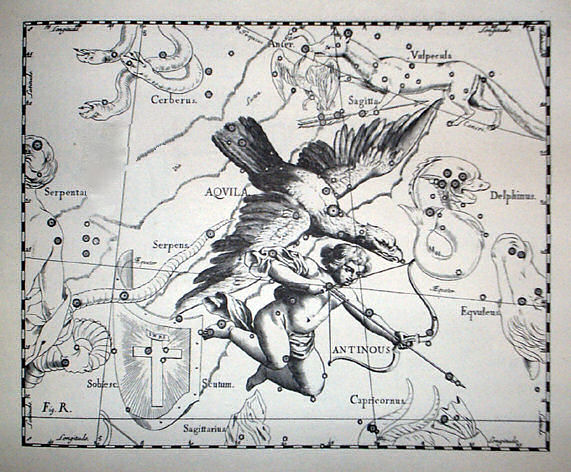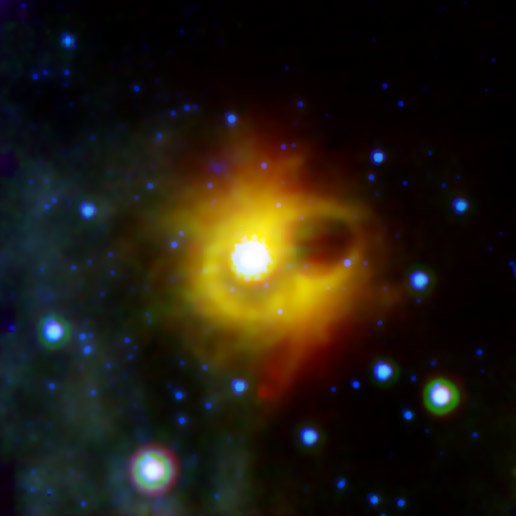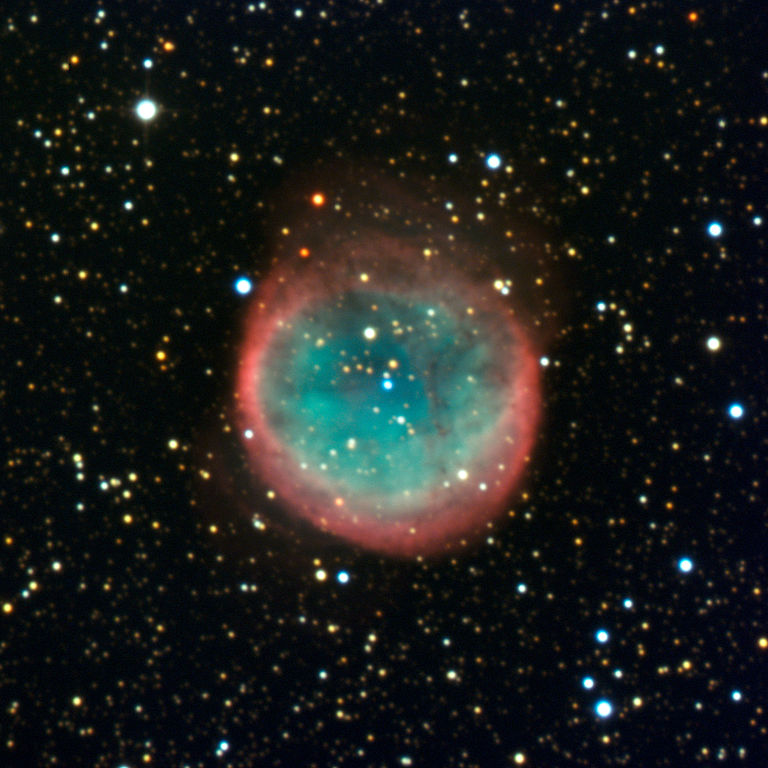
By IAU and Sky & Telescope magazine (Roger Sinnott & Rick Fienberg) [CC-BY-3.0], via Wikimedia Commons
"The Eagle"

By IAU and Sky & Telescope magazine (Roger Sinnott & Rick Fienberg) [CC-BY-3.0], via Wikimedia Commons
Abbreviation: Aql
Genitive: Aquilae
Constellation family: Hercules
Nearest constellations: Aquarius, Capricornus, Delphinus,
Hercules, Ophiuchus, Sagitta, Sagittarius,
Scutum, Serpens
Right ascension: 19.67h
Declination: -2.50°
Visible between latitudes: +85° and -75°
Square degrees: 652
Luminary: Altair (Alpha Aquilae)
Named stars: Altair, Alshain, Tarazed
Notable deep sky objects: B143-4, NGC 6709, NGC 6755, NGC 6781, NGC 6803

By Johannes Hevelius [Public domain], via Wikimedia Commons
Aquila is an equatorial constellation visible during September.
Aquila's brightest star, Altair, forms part an asterism called the Summer Triangle with Deneb (from Cygnus) and Vega (from Lyra).
In 1999, Aquila was the source of a nova that could be seen with the naked eye. It was caused by the explosion of a white dwarf star located 13,000 light years away.
In Greek mythology, Aquila represented the eagle that was the keeper of Zeus's thunderbolts. According to some sources, Aquila is the eagle who captured Ganymede, also known as Aquarius, who became Zeus's cup bearer.
SGR 1900+14 (SGR = soft gamma repeater, or an object that emits X-rays and gamma rays):

By NASA/JPL-Caltech [Public domain], via Wikimedia Commons
NGC 6781 (planetary nebula):

NGC 6741 (planetary nebula):

By Judy Schmidt [CC-BY-2.0], via Wikimedia Commons
NGC 6814 (spiral galaxy):

By Judy Schmidt [CC-BY-2.0], via Wikimedia Commons